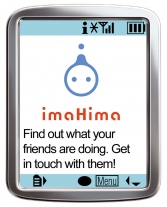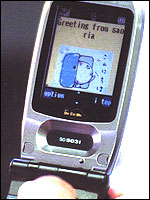Has Mobile Check-In Technology Finally Found its Place? (June 25, 2012)
Mobile check-in technology is a curious beast. Or, more specifically, it is a prying, snooping and interfering beast with night vision goggles, and a fantastic sense of direction. Like some kind of intrusive virtual paparazzi, it is ostensibly a privacy-eroding feature, setting the precedent for its image-based big brother Google Earth (giving the question “Where on earth have you been?” an altogether more insidious and direct meaning). Displaying a user’s “Dear Diary” posts with startling accuracy, check-in technology is part-Private Investigator, part-Glenn Close in Fatal Attraction, with a little dose of a wilderness explorer thrown in for good measure. But it is not all bad, surely?
As a form of social-life curriculum vitae, it provides friends and family with an intriguing document of your life experiences as they develop. It allows you to share and network your status, location, mood, current activity and favoured curry house or beauty spot. The result is a chronological patchwork quilt of your most memorable incidents and events. Indeed, how our history might have been shaped differently had mobile check-in technology been available for the twentieth century’s most iconic and unforgettable events. “Anne Frank is at Prinsengracht 263-265, Amsterdam, Netherlands;” “The Beatles have just checked in at The Cavern;” “Bill Clinton is at the Oval Office–with Monica Lewinsky.” “Lord Lucan is at…” ah, internet connection temporarily lost. Never mind.
Staving off competition from other check-in services GetGlue, Google Latitude, the short-lived Brightkite, Facebook Places (announced in August 2010 and then discontinued a year later) and Gowalla (which closed in March 2012), U.S. company Foursquare currently leads the way in location-based technologies. Launched in March 2009 by Dennis Crowley (who also founded Google Latitude’s SMS-based precursor Dodgeball) and Naveen Selvadurai, Foursquare is a social networking platform that uses familiar GPS hardware across mobile devices and smartphones (Blackberry, iPhone, Android) to accurately track and convey the user’s location in real-time, allowing them to post their geographical location via Facebook or Twitter to “make the most of where they are”. With over twenty million registered users, and a recent glossy redesign in June 2012, Foursquare continues to put the style back into lifestyle (while many TV stylists seem intent on taking it out…). The simple premise of “you just being somewhere” has never felt so darn creative.
The revelation from envisionIP that the Japanese social networking company ImaHima may own the patent(s) to such location-determining technology has the potential to throw whopping great check-in spanner into the social media works. ImaHima, translated as “Are you free now?” demonstrate a priority on check-ins around December 14th 1999, a time in which “social networking and mobile smartphones,” as Envision IP’s have findings suggested, “were in their infancy”. Among the key facts and figures involved include Patent No. US 7,822,823 originally filed in late 1999, which specifies the communication of future and current activity between mobile Internet devices. Another is US 8,005,911, which seems to anticipate what Envision IP calls the “sharing [of] information between online users based on their social relationship”, a statement which one could almost envisage adorning a twenty-foot high crest at Facebook’s California HQ.
If the patents contained within ImaHima’s portfolio prove to be genuine, then there might just be more sides to this Foursquare malarkey that meets the eye, and tremors felt under the lavish stones floors of Zuckerberg Towers. Although ImaHima have infiltrated Japanese mobile operators such as DoCoMo, JPhone and Softbank, and won several awards (most notably at Prix Ars Electronica back in 2001), they have yet to attain anything like the status of its competitors. Even Facebook got a movie. But ImaHima’s basic premise to provide a customised, location-based information service on mobile telecommunication platforms may prove to be the blueprint against which current location platforms can be mapped. The future of check-in alerts, pop-ups and updates–whether it is by a business wanting to get on the map, or an old friend just itching to tell the world that he is somewhere hotter than you–may come to embrace the inventions that started it all.
And after years in the social media wilderness, ImaHima, it would seem, have finally checked in.
Social Networking Company ImaHima Owns Patents for Mobile Check-In Technology (May 11, 2012)
Social Networking Company ImaHima Owns Patents for Mobile Check-In Technology
May 11, 2012
tags: check-in, mobile, patent, social networking
 Envision IP has been looking into the patent portfolio of a Japan-based company called ImaHima (http://www.imahima.com/en). In Japanese, ImaHima means “Are you free now?” The company owns patented technology that allows sharing your current status (i.e., location, activity, mood, etc.) among friends using mobile phones, and technology to display such updates in a news feed-type fashion with commercial advertisements.
Envision IP has been looking into the patent portfolio of a Japan-based company called ImaHima (http://www.imahima.com/en). In Japanese, ImaHima means “Are you free now?” The company owns patented technology that allows sharing your current status (i.e., location, activity, mood, etc.) among friends using mobile phones, and technology to display such updates in a news feed-type fashion with commercial advertisements.
We believe that ImaHima’s patents, which cover various aspects of location-based status updating and targeted content delivery, are fundamental to the concept of mobile “check-ins”. ImaHima’s patents all claim priority to December 14, 1999, a time when social networking and mobile smartphone use were in their infancies.
Below is a brief overview of ImaHima’s US patent portfolio.
Figure 1 of US 7,822,823, entitled “Systems for communicating current and future activity information among mobile internet users and methods therefor” discloses displaying a feed of status messages from friends on a user’s mobile device.
Below is Figure 8 from the ‘823 patent, which shows an interface for checking-in to a location and providing a current activity or status.
The ‘823 patent has very interesting claims that cover sending a message to “a plurality of users associated with the sender who have agreed to receive messages from the sender”, and where the message can include location information and/or activity information. Simply put, this patent seems to claim location-based mobile check-in technology.
US 7,818,415, having the same title as the ‘823 patent, has claims reciting populating a news feed with status updates of friends, where the news feed includes “at least one commercial offering”. The patent appears to cover a news feed of information that includes advertisements that are relevant to the subject or content of the status updates contained therein.
US 8,005,911 entitled “Systems for communicating current location information among mobile internet users and methods therefor”, is similar to the ‘823 patent, but it specifically claims “automatically making available the received activity information and the location information to persons identified as connected to the first user”, where the relationship between the two users is “an agreed-upon connection between the first user and the second user”. This appears to be a very early form of not only mobile-based social networking, but also sharing information between online users based on their social relationship.
Finally, US 7,284,033, also similar to the ‘823 patent, has claims reciting transmitting a status update and location information, where the location information is based on a “sender’s non-GPS enabled mobile telephone”. This patent is interesting, considering that it claims priority back to December 1999, when location determining means such as triangulation and IP address geo-location technology were not commonplace. However, given today’s widespread use of tablet computing devices, many of which are not utilized with GPS or cellular service, the ‘033 patent appears very relevant in regards to the use of tablets for checking-in purposes.
In addition to US 7284033, US 7818415, US 7822823, and US 8005911, ImaHima owns two pending continuation patent applications before the USPTO, and a pending patent application in Japan.
ImaHima never gained a significant following in the US market, we suspect, due to the adolescence of the desktop-based social networking phenomenon and mobile phone use in the early 2000’s. However, with the increasing popularity and use of mobile social networking, ImaHima’s patents certainly seem relevant today.
ImaHima Neeraj Jhanji interviewed on ITV Japan (October, 2007)
Neeraj Jhanji is the founder and CEO of ImaHima, which launched one of the world’s first mobile location-based community in 1999. Since then he has launched several other mobile and internet businesses in Japan including mobile AOL instant messenger, Habbo Hotel Japan, Atlassian Japan (enterprise collaboration software) and most recently PayMe (global konbini gateway), growing ImaHima into an interactive media technologies company. He is passionate about social technologies, that bring people closer together. He is of Indian descent, pursued business school in the US and has worked in Japan longer than he planned to.
ImaHima in Focus magazine (German) (June 1, 2006)
Wie es zwischen Menschen funkt
Die Vorreiter der drahtlosen Gesellschaft orten, verabreden und vergnugen sich mit modernsten Mobiltechnologien
(an excerpt)

Die wahnsinnigen Ideen aus Helsinki haben Methode, dreht sich doch in der drahtlosen Gesellschaft alles um den Aufenthaltsort und die Eroberung des Raums. ?Wo bist du?” ist das Mantra der Mobilkommunikation: die meistgestellte Frage am Handy, die ?zur Definition des mobilen Zeitalters geworden ist”, so die britische Kulturwissenschaftlerin Sadie Plant. Wie schon heute Menschenmengen den urbanen Raum mit Hilfe ihrer Handys durchsurfen, als waren sie von einem geheimnisvollen Gruppengeist gesteuerte Bienenschwarme, schildert Plant in einer Studie fur den Handy-Hersteller Motorola. ?Protestler auf den Philippinen, deutsche Kernkraftgegner oder mexikanische Zapatisten nutzen SMS, um sich spontan zu organisieren”, berichtet Plant. ?Ahnliche Phanomene finden Sie bei Teenagern.” Drahtlose Technologien, weis Johannes Hummel, der sich an der Uni St. Gallen uber Online-Gemeinschaften habilitiert, seien ?besonders geeignet, um bestehende Gemeinschaften zu pflegen.”
 Es muss aber langst nicht mehr SMS sein. Die 17-jahrige Jillian Scott im Stadtchen Genoa westlich von Chicago etwa beschaftigt sich zu Hause gern mit ihrem Cybiko-Taschencomputer. Nur, wenn ihr Cousin Taylor zum Spielen kommt, ist sie wundersamerweise immer unterwegs. Auch der kleine Taylor besitzt einen Cybiko, und der eingebaute Friendfinder kundigt seine unliebsame Ankunft ab etwa 100 Meter Distanz an. Das in den USA eine halbe Million Mal verkaufte Gerat, mit dem ein russischer Hersteller die jugendliche Kundschaft zur drahtlosen Gemeinschaft verknupft, nutzt die gleiche Funktechnik, die uns das schnurlose Haustenlefon beschert hat. Seine Besitzer konnen drahtlos chatten und uber Mamas PC E-Mails empfangen.
Es muss aber langst nicht mehr SMS sein. Die 17-jahrige Jillian Scott im Stadtchen Genoa westlich von Chicago etwa beschaftigt sich zu Hause gern mit ihrem Cybiko-Taschencomputer. Nur, wenn ihr Cousin Taylor zum Spielen kommt, ist sie wundersamerweise immer unterwegs. Auch der kleine Taylor besitzt einen Cybiko, und der eingebaute Friendfinder kundigt seine unliebsame Ankunft ab etwa 100 Meter Distanz an. Das in den USA eine halbe Million Mal verkaufte Gerat, mit dem ein russischer Hersteller die jugendliche Kundschaft zur drahtlosen Gemeinschaft verknupft, nutzt die gleiche Funktechnik, die uns das schnurlose Haustenlefon beschert hat. Seine Besitzer konnen drahtlos chatten und uber Mamas PC E-Mails empfangen.
 Wer aber einen Blick in die Zukunft der smarten, vernetzten Menschenschwarme werfen will, muss Tokio besuchen. Dort sitzt zum Beispiel der geburtige Inder Neeraj Jhanji in seinem Buro hoch uber dem Nobelviertel Ebisu und schaut ins Display eines i-mode-Handys – uber 30 Millionen Japaner haben dank dieses Dienstes eine permanente drahtlose Internet-Verbindung in der Tasche (S. 144). ?Mal sehen, wer in der Gegend heute Abend Zeit hat”, meint Jhanji, und nach ein paar Klicks erscheint eine Liste. Da ist zum Beispiel Yuki, 1,73 gros, 58 Kilo schwer, 20 Jahre alt, der zu einem Punk-Konzert will. ?Ich schicke ihm eine E-Mail”, sagt Jhanji, ?dass ich komme.” Jhanjis Service heist ?Imahima”, zu Deutsch etwa: ?Hast du gerade Zeit?” 500 000 Menschen sind dort registriert, um uber den Aufenthaltsort von Freunden auf dem Laufenden zu bleiben oder neue kennen zu lernen. Vor kurzem ist eine Schweizer Version gestartet. ?Deutschland”, so Jhanji, ?ist das nachste Ziel.”
Wer aber einen Blick in die Zukunft der smarten, vernetzten Menschenschwarme werfen will, muss Tokio besuchen. Dort sitzt zum Beispiel der geburtige Inder Neeraj Jhanji in seinem Buro hoch uber dem Nobelviertel Ebisu und schaut ins Display eines i-mode-Handys – uber 30 Millionen Japaner haben dank dieses Dienstes eine permanente drahtlose Internet-Verbindung in der Tasche (S. 144). ?Mal sehen, wer in der Gegend heute Abend Zeit hat”, meint Jhanji, und nach ein paar Klicks erscheint eine Liste. Da ist zum Beispiel Yuki, 1,73 gros, 58 Kilo schwer, 20 Jahre alt, der zu einem Punk-Konzert will. ?Ich schicke ihm eine E-Mail”, sagt Jhanji, ?dass ich komme.” Jhanjis Service heist ?Imahima”, zu Deutsch etwa: ?Hast du gerade Zeit?” 500 000 Menschen sind dort registriert, um uber den Aufenthaltsort von Freunden auf dem Laufenden zu bleiben oder neue kennen zu lernen. Vor kurzem ist eine Schweizer Version gestartet. ?Deutschland”, so Jhanji, ?ist das nachste Ziel.”
imaHima Neeraj Jhanji on Wireless Watch Japan (September 24, 2004)
Wireless Watch Japan interviews Neeraj Jhanji founder of imaHima about Habbo Hotel Japan at the Tokyo Game Show September 24, 2004.
imaHima mentioned in Ericsson Telecom Report (April 24, 2002)

Telecom shapes the future city
“We shape the things we build. Thereafter, they shape us.” – Winston Churchill
Envisage cities and homes that work smarter, not harder. Envisage communications that are available through everything but a PC. And most importantly, envisage sustainable services hitting the market now that will involve everyone, regardless of background, interests or job.
William J. Mitchell’s book e-topia shows that attitudes towards public and private space are developing alongside communications technologies. From the virtual world of the Internet, e-mail and television, a whole new physical urban infrastructure will emerge, changing the face of our cities and homes as dramatically as railroads, highways, the electric power supply grid, and telephone networks have already done.
And these changes in behavior are happening now at a grass roots level as users adapt existing technology to fulfill their individual needs. Already user behavior is driving the merger of the virtual world with our environment; we are using the spaces we inhabit in fundamentally different ways as we use incorporate new technologies into the way we work, play, shop and love. The operators could quite literally take on the role of being the architects of our future digital cities by offering consumers services that create new scenarios, and thus spaces, in everyday life.
Community Design
Mitchell lays out clear strategies for the creation of cities that not only will be sustainable but will make economic, social, and cultural sense in an electronically interconnected and global world. Mitchell visualizes the twenty-first century as having new settlement patterns characterized by multi-functional areas such as live/work dwellings, 24-hour pedestrian-scale neighborhoods rich in social relationships, and a dynamic local community life complemented by networks of electronic meeting places, decentralized production, marketing, and distribution systems. Our lives will expand dramatically with new ‘map-coordinates’ of time, place, purpose and emotion: the city will be there to serve human needs and not the other way around, he writes.
Community design addresses how new communications technology and services are used in the contemporary urban setting. Tuomas Toivonen of the Aula Project in Helsinki says: “Community design sounds like a scary idea, but it is about creating new spaces from the bottom up that allows communities to flourish. Today’s city does not really support the idea of community.” There is the home, and the task specific workplace. Public space is becoming increasingly consumer based, where you have to “pay to stay,” and the spaces in between are very often grey and hostile, he says. Genuinely public spaces like museums or religious centers are struggling for survival.
The Aula Project initially aimed to investigate a socially, technologically and organizationally charged space through designing all aspects at once. The Project rapidly grew into an international network of minds from all kinds of disciplines focusing on “making a space for new kinds of encounters to take place.” Toivonen says that Aula’s success has been to bring together diverse people for diverse projects. The only common denominator was the space. Neither lobby nor art center, conference room nor cafe, neither public nor private, Aula grew from word of mouth recommendation and despite the “hardly surprising challenge of funding and hideously expensive space,” and is a glimpse into Mitchell’s e-topian future. With ubiquitous IT the city is an organic entity serving individuals with differing needs. Toivenen believes that it is these desires that will shape the market in the long run because only relevant technology will survive. And it is important, he says, for the operators to ‘get with it,’ to recognize that users are the driving force in broadband and that their needs cannot be dictated to them, whether this be related to content, usability or pricing.
“Interesting phenomenon are already happening. People with specific needs are taking initiative. The user needs are more important than flashy technology. I have even seen groups of people using old-fashioned walkie-talkies, because the cost of just maintaining their existing contacts with a mobile is too high. The walkie-talkie is a spillover from the film, security and courier industries, but now you see groups of skaters and other young people using them,” he adds. “These might be small groups of people now but it shows that there are limits on how much people will pay for communications. In Japan they have cheap and ‘stupid’ phones all connected to an intelligent network. The phones are just affordable shells for services that are also affordable. SMS tells the consumer that distance no longer equals price so consumers are getting conflicting messages,” he says. Exciting services, adds Toivonen, create new scenarios, and it is the success of these cutting edge services that illustrate how users are demanding creative solutions.
I am free now
Our communications expectations change perceptibly with every new tool we adapt to. The old fashioned ‘non-deletable’ paper address book lists people we want to contact, whereas the mobile phone prioritizes who can (or cannot) contact us and when. In the future we will be paying for freedom from superfluous information; personalized two-way information streaming will be a highly valued chargeable service.
Companies like ImaHima are providing simple services now that respond to our new attitudes towards communication and being ‘mobile.’ Launched in Japan to work with i-mode, WAP Java-phone and SMS, “ImaHima” means “I am free now!” or “Are you free now?” It is a mobile, location-integrated, community and instant messaging service that allows its users to share their current personal status (location, activity, mood) publicly or privately with their friends and send pictures and instant messages to them, to meet face to face -or not. There are over 500,000 users in Japan, but it is hitting the European market with its multi-lingual functions; it is available over SMS in Switzerland and is due to expand to Germany and other European countries.
Whether you are feeling sad, just want to see a movie with a friend or meet someone new, ImaHima is a network that aims to just bring people together in those unpredictable spaces in their busy lives, says CEO Neeraj Jhanji. Mobiles can communicate with desktop internet connections with chat functions like ICQ. Jhanji says the idea came to them in a coffee shop when they wondered if any other friends were in the area.
The concept has taken off with people from their mid-teens to their mid-twenties who want to be connected all the time, but ImaHima has found an unexpected market amongst medical practitioners and other busy professionals who use the service in both their private and professional lives. When Toivonen first came across ImaHima he was thrilled: “The city suddenly was open to new possibilities that wouldn’t happen otherwise.”

ImaHima is a concept that envelops public, private physical and virtual space, a “back to basics” idea that in turn fundamentally influences the way we interact in our public/private spaces. The relevance is for services that will create new scenarios to open a platform for further added value, rather than just adding to the ‘noise’ of images and information that is associated with new communications technology.
I am my home
The home, says Toivonen, is becoming a more private personal space offering isolation and contrast to the anonymous and uncontrollable city. It is no longer the meeting place it used to be. The city grows vaguely urban on a macro-scale yet intensely private on a micro-scale; there is a demand to be simultaneously protected and connected within ones castle as one is protected/ connected to and from communication with the mobile phone.
“Broadband is becoming a commodity where operators are competing on price for internet access, and the industry has to break this,” says Uolevi Partanen of The 5th room, a Stockholm based company that boldly offers a 3 year break even business road map for connected home services based on the most pessimistic market scenario.
“When we talk about cable TV, we don’t talk about transmission techniques but channels and content, it is a service-driven business,” he adds. “The connected home is not a futuristic concept,” he emphasizes. “We don’t have to wait.” The home is the place to start with usable smart services that will be the seeds of total connected community web linking public and private virtual spaces with the real world, says Partanen.
As Broadband demands and penetration increases, so will the demand or willingness to adopt new services, but there is no big secret for offering sustainable home services now, says Partanen’s partner Sanjoo Malhotra. The message to the Operators is to start now with what is possible, or be out of the race for the huge potential market that is untouched today. The value, he adds, comes from contextual services bundled to fit family-lifestyles, creating complete new values by a cross-functional integration of different services. Before services will be launched, stakeholders have to be able to identify their role and areas of added value in the value chain, says Malhotra: “Not only will the operators increase the loyalty of their existing customer-base but they will find new markets with the elderly, for example, who are suffering from society’s very real lack of care-workers.”
A revival of the personal
“We are still very PC focused and cannot imagine anything else. The home will consist of different media addressing different mindsets and spaces within the home. And when you start introducing even the most basic home services to the market, and crossing them with other service verticals on the same platform, then you have a sustainable business scenario with a tremendous potential for growth,” says Partanen.
The entertainment and communication sections of a family budget are, to a large part, already addressed, whereas home services and social networking services still remain unaddressed. Malhotra believes that the initial focus in the home will be on kitchen-based household services followed by services relating to energy and security. “Our behavior within the home will probably not change a great deal,” Partanen adds. “In most cultures and across the ages the kitchen is the communication hub of the home; it is the room where a majority of major decisions are made.”
“There is already fierce competition amongst the big players like Sony and Microsoft to dominate different rooms in the home,” he says. But the industry is still very focused on entertainment, only one of all possible service verticals. “The techno-gaming MTV generation whose demands have pushed broadband so far are growing up. They are not going to have the same idea of how a home should function as their parents. The industry has to be aware of the new generation’s potential as Broadband consumers and act fast,” says Malhotra, “and the home is the place to start to develop services that will extend into every aspect of our everyday lives.”
Jhanji and Toivonen also agree that entertainment is just the tip of the iceberg. “The city can be regarded as a layering of personal realities over a public terrain escalating in consumerism,” says Toivonen. What communications technologies can offer us is a revival of the private and the personal, within the home but also in the city. New “spaces” reaffirm identity, whether virtual social networks or physical spaces like cafes. Identity is the intensity of shared values within the target group. “The strength of the social connections is inversely proportional to the perceived publicness of a place,” says Toivonen. In the future, he adds, the city will accommodate layers of the private and the public, and this has to do with new communications behavior.
An Entrepreneurial Spirit
Communications technology is changing perceptions of public and private space, architecting the physical spaces we shall inhabit in the future. Creative services that create new scenarios can shape the market of the future, but the operators have to start somewhere, with innovative pricing and content. “What is needed is an entrepreneurial spirit to make the first step,” says Malholtra. Toivonen adds that looking beyond the mainstream will give the industry ideas of how to utilize existing technology to bring about simple, inexpensive but radical services to the market. Knowledge of society’s ‘fringe’ activities/behavior is fundamental in creating cutting edge services now that are relevant for future market growth, he says.

Jhanji looks forward to bringing Imahima into the next realm, with even easier to use image based communications. What they all agree upon is that usability in its broadest sense is the key issue, and the time to start is now.
- Tanya Grassley





